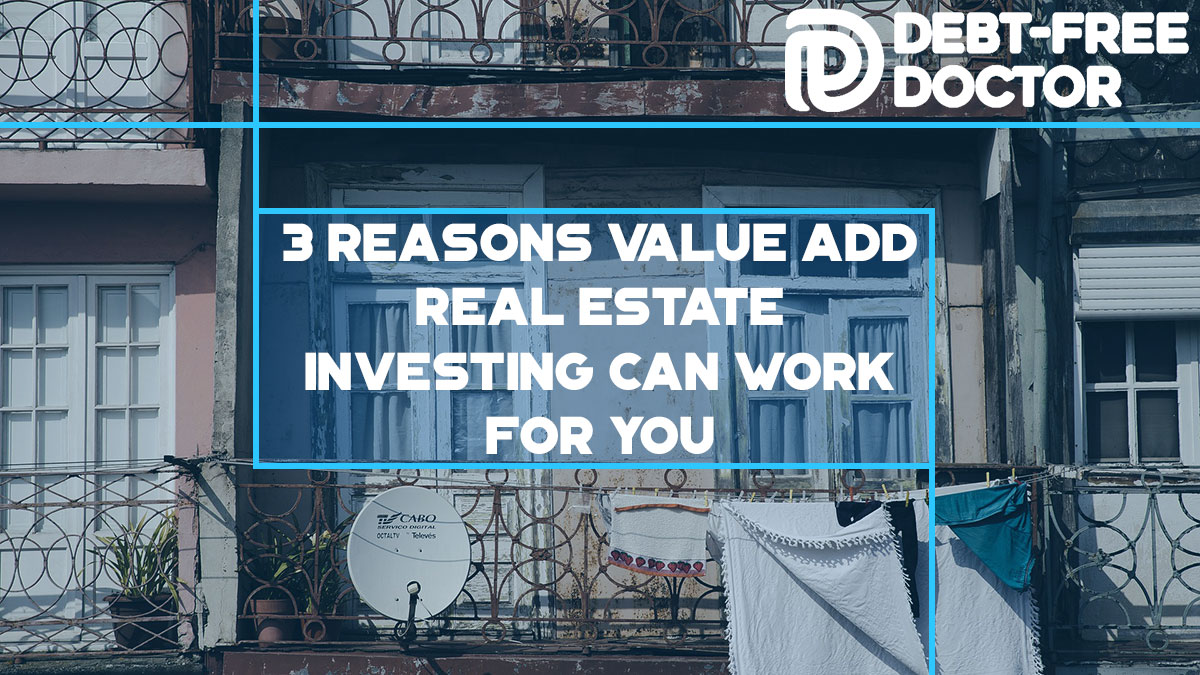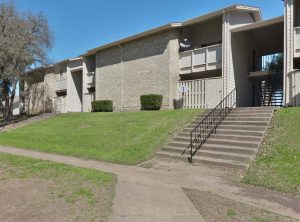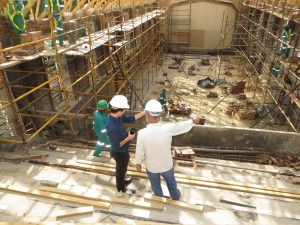3 Reasons Value Add Real Estate Investing Can Work For You
My dad’s father and uncle started a hardware store (Star Hardware) in 1941 that my dad still runs today. There’s nothing that I’ve ever seen that he couldn’t fix. (Maybe that’s why his nickname is “Mr. Fix-it“?
Occasionally my wife and I will call him while we’re out walking to inform him of something left out by the road that he should pick up.
Usually these are old tables or chairs that he rehabs and them sells for a profit.
He’s great at taking something that has been overlooked, putting in a little sweat equity to rehab and then selling later.
This is the essence of value-add which is also a commonly used investment strategy in real estate investing.
Don’t Miss Any Updates. Each week I’ll send you advice on how to reach financial independence with passive income from real estate.
Sign up for my newsletter3 Common Real Estate Investing Strategies
When it comes to real estate investing, there are three main strategies:
#1 Core investments
The core real estate investing strategy is for those looking for a conservative return with minimal risk.
Regarding multifamily properties, a core real estate example would be Class A properties.
These are newer properties in upscale neighborhoods with high quality luxury amenities.
Typically core properties have higher rents with a lower vacancy rate.
This in turn helps to mitigate risk generating a lower cap rate in exchange for the decreased amount of problems with the property.
#2 Opportunistic
Unlike the core real estate strategy, using opportunistic strategies are the riskiest of all. These investors are looking for the potential highest returns in “opportunity” which is usually property that is bought low with the hopes of selling high for a quick profit.
These projects often initially have minimal to no cash flow with a larger potential later once the property has been rehabbed.
An example of this type of investment in the multifamily space would be new construction of an apartment building. Usually large amounts of capital are needed due to high construction costs which in turn will hopefully attract tenants that can pay an above average rent.
The key to success in this area is using a highly successful team with experience in:
- land development
- repositioning buildings from one use to another
- ground up developments
#3 Value Add Real Estate
Most of the syndication deals we’re invested in reside in the value add class which consist of Class B and Class C property.
Most are familiar with fix and flips as this would be a type of value add in the single-family home space.
This is where someone finds and purchases a home that needs some TLC, rehabs it then sells to a new owner for a profit.
So this person is rewarded for taking on a high risk hoping to improve a home to the point where it’s sold to someone at a cost that will at least cover the home’s price and rehab cost.
The value add component is similar to the fix and flip model when it comes to the multifamily space except on a much larger scale.
Instead of renovating one unit, we’re talking about multiple units depending on how large the apartment complex is.
What Are The Risks In Value Add?
As you can imagine, when purchasing a property that needs improving, its condition could be lacking in several areas.
Depending on how run down the property is, the amount of construction could be quite high which would significantly add to the risk of the project.
Usually the more involved renovations (major overhauls) needed, the higher the risk.
Other risks can involve the tenants.
Typically rents can be increased after the rehab has been completed. Occasionally this can cause some to move out and also make it difficult acquiring new tenants which contributes to the overall risk of the project.
Value Add Examples – Physical Improvements
Value add real estate is typically a B or C class property that has outdated appliances, peeling paint, distressed landscaping and more.
Many times updates need to be made to both the exterior and interior of the buildings.
Here’s a few capital improvements that can be performed.
Interior updates
Common value add interior updates include:
- upgraded fixtures
- new flooring/carpet
- granite countertops
- stainless steel appliances
- new cabinets
- painting units
- new lighting
Exterior updates
Adding value to the exterior of the buildings along with some of the shared spaces include:
- new signage
- update fitness center
- new pool or rehab existing one
- parking lot
- painting
- update clubhouse
- new landscaping
- covered parking
- playground update
- shared spaces (BBQ pit, picnic area, etc.)
In the past, I had 99.9% of our investments in the stock market mainly in Vanguard index funds. I still fund our practice’s retirement account for my wife and I and match the employee’s contributions.
Other than that, the remainder of any excess income goes towards passive real estate investments.
As a passive investor, I mainly focus on multifamily value add syndications in the Southeast U.S.
Here’s a few of the reasons that value add investing can work for you:
#1 Rent bumps
One of the major reasons why a value add play can work has to do with increasing rents.
Many times the property has below average rents which sets it up nicely for the sponsors to justify the increase.
Once they make interior and exterior improvements, the net operating income (NOI) will increase which can greatly increase the building’s value (an example of this is below).
#2 Additional income streams
We all love extra conveniences, right? Your tenants will too when it comes to making their lives easier.
And they’ll also be willing to pay more for these such as:
- covered parking
- high-speed internet
- cable/satellite
- Amazon package lock boxes
- washer/dryer
#3 Analysis of existing operations
On occasion, the property’s different revenue streams and expenses can be placed in incorrect categories on the profit and loss statement making it tough to find opportunities for value add (poor management).
A good sponsor team will be able to find creative ways to create extra income if some of the expenses found can be passed along to tenants.
Related article: 7 Ways To Evaluate a Real Estate Sponsor
Also, the net operating income (NOI) and be increased if some of these expenses can be somehow reduced.
Example of a Value Add Purchase
Dr. A is an oral surgeon in Orlando, FL and decides to purchase a local apartment complex conveniently located near Walt Disney World.
He feels it’s a great buy and could also be a value add play.
His local broker gets him a great deal at $1 million with a 5% cap rate (see below for explanation).
- Property value = $1 million
- Property brings in $100,000 in income
- Operating expenses = $50,000
- Net operating income (NOI) = $50,000 (Income – expenses)

- $50,000/ $1,000,000 = 5% cap rate
After two years of rehabbing the property, he’s able to raise the NOI by $25,000 from $50,000 to $75,000.
We can now calculate the increase in market value:
- NOI / Cap rate = Market value
- 75,000/5% = $1.5 million
This is one of the best yet most overlooked areas with regards to real estate.
By Dr. A increasing his NOI by just over $2,000/month ($25,000/yr), he was able to increase the value of the property by $500,000 ($1 million to $1.5 million).
Not bad!
Conclusion
The bottom line is that every commercial real estate strategy has both risks and benefits.
For busy doctors and other high-income earners, the value add strategy is a great way to increase cash flow through rental income providing a good return on investment (ROI) upon sale.
If you’re looking for investment opportunities that provide positive cash flow with higher potential returns, join the Passive Investors Circle today.
Join the Passive Investors Circle







